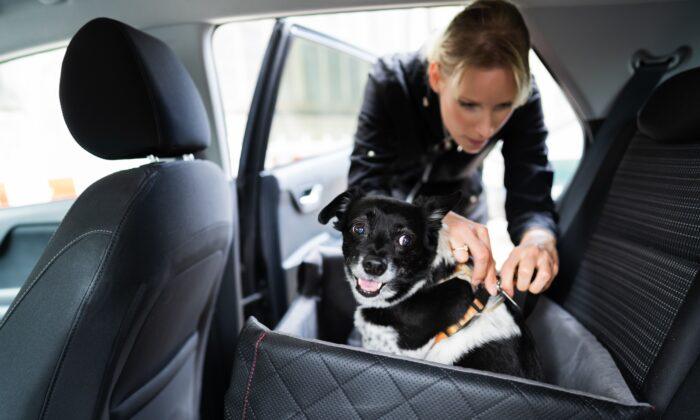Preparing our homes and families for natural disasters and severe weather is a well-known subject here at Everyday Cheapskate. We talk about it a lot because it’s so very important. But what about your pets? Are your pets prepared to face and survive disaster? According to ServiceMaster Restore, 83 percent of pet owners live in areas affected by natural disasters, yet fewer than half have an emergency plan for pets in place.
Your emergency plan should address the specific natural disasters prevalent in your region. For example, if you live with your pets in an area with heavy snowfall, you want to prepare for potential avalanches, power outages—even being snowbound for multiple days. Those in the Great Plains should plan for tornadoes, blizzards, floods, and severe storms. If you live in an area susceptible to wildfires or mudslides, make sure you have provisions that match the potential threat.
No. 1: Microchip Your Pet
A microchip is an easy, affordable way to keep your pet’s identification on him or her at all times. After your pet is microchipped, make sure to keep your phone number, address, and other chip information updated.No. 2: Always Keep a Collar and ID Tag On
If you get separated from your animals, a collar or harness with appropriate ID tags can help reunite you and keep from a gloomy situation.No. 3: Identify Pet-Friendly Shelters
Before disaster strikes, it’s critical to seek proper shelter and find possible escape routes that can get you, your family, and your pets there safely. During emergencies, many shelters are unable to accept pets for public health reasons, so research your area to determine boarding shelters, animal shelters, or pet-friendly hotels that can take your pets while the storm passes.No. 4: Create an Emergency Kit for Your Pet
When creating a reliable emergency plan for pets, it’s essential that you have the proper supplies to stay safe if you have to leave home. Make one for each furry friend. A pet emergency preparedness kit or “go bag” should include at least the following items:- Food and water to last a minimum of three days
- Food and water bowls
- Disposable garbage bags for cleanup
- Pet first-aid kit
- Extra collars or harnesses, leashes, and ID tags
- Pet carriers
- Photos of your pet for identification
- Copies of vaccination records stored in a waterproof container
- Any medications needed
- Toys and other pet favorites for stress relief
- Litter supplies for cats
No. 5: Get a Rescue Alert Sticker
Rescue alert stickers alert rescue workers that animals may be stuck inside. Stickers are available from the ASPCA (go to ASPCA.org to locate the shelter nearest you) to be affixed to your front door. Include information such as the types and number of animals and your contact information, and then place it out front before an approaching storm. If your pets are safe, you can simply write “EVACUATED” across the sticker for rescuers.Remember that if it’s not safe for you to stay home, it’s not safe for your pets, either. Pets left to fare for themselves can easily be injured, lost, or worse. The solution is an emergency plan for pets so that no pets are left behind!





